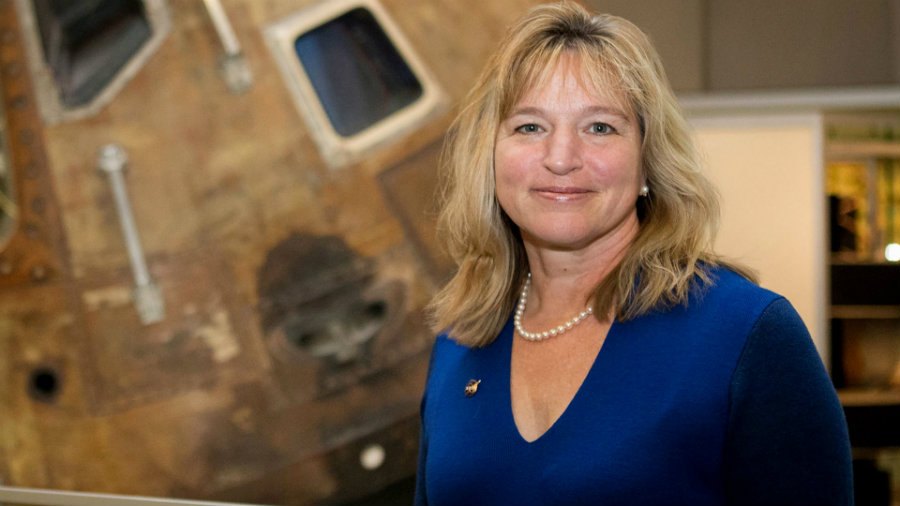Ellen Stofan announced she is leaving the National Aeronautics and Space Administration after being the agency’s leading scientist for three years. NASA officially announced her departure on December 21, although Stofan had already hinted her plans.
NASA spokesman Dwayne Brown has not announced Stofan departure date or intends to select a new chief scientist, but Stofan did say that she is seeking “new adventures.”


Dr. Ellen Stofan was appointed NASA’s chief scientists on August 25, 2013. In her position, she served as a principal advisor to NASA Administrator Charles Bolden on the agency’s science programs and science-related strategic planning and investments.
The leading scientist acts as the primary advisor to the NASA administrator on science issues, including strategic planning of NASA science programs. Stofan’s former position is also in charge of coordinating with other government agencies and the scientific community in general but is not directly involved with the management of NASA’s Science Mission Directorate programs.
Stofan first indicated she was leaving the agency on December 5 during an astronomy symposium in California sponsored by the National Academies’ Space Studies Abroad. At the event, Stofan’s placard fell. She then commented that she was going to leave NASA in two weeks, suggesting that the falling sign was some indication of that.
The most exciting part of Stofan work with NASA: The search for life beyond Earth
During an interview published on NASA’s Tumblr, Stofan confirmed her plans to move on from NASA and explore “new adventures.” She stated she would miss “the people of NASA the most.”
Stofan said that everyone she worked with is committed to the agency’s missions saying they go beyond the frontiers of science and technology to accomplish important things for America. She stated that NASA represents the best of the United States.
During the interview, Ellen Stofan said that the most exciting part of her work was the search for life beyond Earth.
“People have long wondered if we are alone, and we are now actually going to answer that question in the next few decades. We are exploring Mars, where it is very likely that life evolved at around the same time life evolved here on Earth,” said NASA chief scientist.
She added that NASA is planning to explore the ocean worlds of the outer solar system, including Europa -one of Jupiter’s moons- where she thinks the agency might find life in subsurface oceans.
Dr. Stofan stated that the Kepler Space Telescope findings -thousands of planets beyond our solar system- made her optimistic about discovering an Earth 2.0, although it will take much time to do so.
Stofan also explained that only by exploring, making measurements and answering scientific questions such as “Where did we come from?” “How do our planet and our universe work?” “What is the fate of our planet?” humans can move forward as a society. She said that doing so we can push technology and engineering in ways that will benefit humanity every day on Earth.
Stofan’s achievements and challenges while NASA’s chief scientist
When it came to Stofan’s accomplishments as the chief scientist, she was proud of getting the agency voluntarily request demographic information in grant proposals submitted by scientists. That information is important to understand any biases in how NASA awards those grants.
“Implicit or unconscious bias is all around us; we may act on deep-seated biases that we don’t even know we have,” she said. “The first step in dealing with bias is seeing if you have a problem, and that is what the data collection will tell us,” Dr. Stofan said during the interview.
She also cited a range of “fun challenges” while she was working at NASA, including helping the agency develop its long-term strategy for human Mars exploration, where life could have evolved at around the same time life evolved on Earth.
Dr. Ellen Stofan: A long career that has led her to work with NASA more than once
Stofan was president of Proxemy Research in Laytonsville, Md., and honorary professor in the department of Earth sciences at University College London in England. Stofan research has focused on the geology of Venus, Mars, Saturn’s moon Titan and Earth.
Dr. Ellen Stofan has a master and a doctorate in geological sciences from Brown University in Providence and a bachelor’s degree from the College of William and Mary in Williamsburg. She received the Presidential Early Career Award for Scientists and Engineers among other awards and honors.
Regarding her long-time relationship with NASA, Stofan is an associate member of the Cassini Mission to Saturn Radar Team and was co-investigator on the Mars Express Mission’s MARSIS sounder. She also was the principal investigator on the Titan Mare Explorer, a mission that intended to send a floating lander to a sea on Titan.
Before being NASA chief scientist she worked in the agency from 1991 through 2000, holding some senior scientist positions at NASA’s Jet Propulsion Laboratory in Pasadena, California, including chief scientist for the company’s New Millennium Program.
Source: Space
